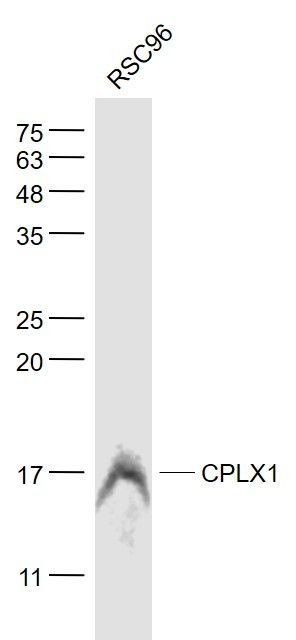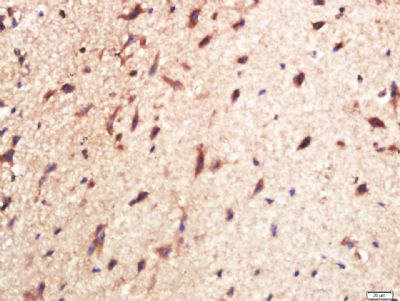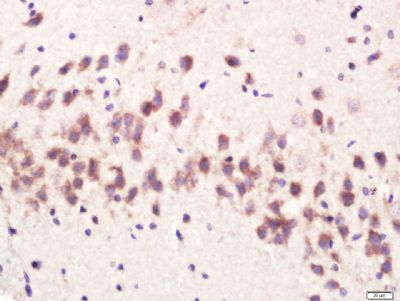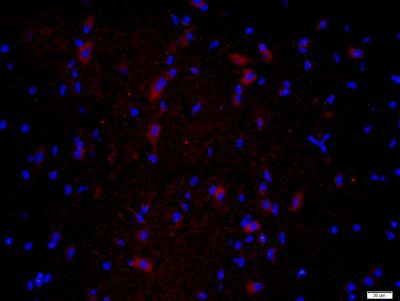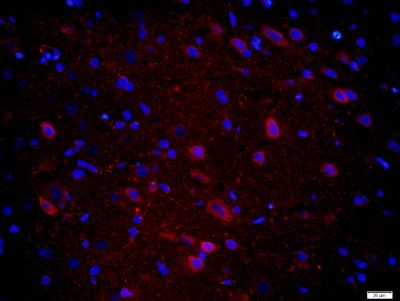Sample:
RSC96(Rat) Cell Lysate at 30 ug
Primary: Anti- CPLX1 (SL11341R) at 1/1000 dilution
Secondary: IRDye800CW Goat Anti-Rabbit IgG at 1/20000 dilution
Predicted band size: 15 kD
Observed band size: 17 kD
Paraformaldehyde-fixed, paraffin embedded (mouse brain); Antigen retrieval by boiling in sodium citrate buffer (pH6.0) for 15min; Block endogenous peroxidase by 3% hydrogen peroxide for 20 minutes; Blocking buffer (normal goat serum) at 37°C for 30min; Antibody incubation with (CPLX1) Polyclonal Antibody, Unconjugated (SL11341R) at 1:400 overnight at 4°C, followed by a conjugated secondary (sp-0023) for 20 minutes and DAB staining.
Paraformaldehyde-fixed, paraffin embedded (rat brain); Antigen retrieval by boiling in sodium citrate buffer (pH6.0) for 15min; Block endogenous peroxidase by 3% hydrogen peroxide for 20 minutes; Blocking buffer (normal goat serum) at 37°C for 30min; Antibody incubation with (CPLX1) Polyclonal Antibody, Unconjugated (SL11341R) at 1:400 overnight at 4°C, followed by a conjugated secondary (sp-0023) for 20 minutes and DAB staining.
Paraformaldehyde-fixed, paraffin embedded (mouse brain); Antigen retrieval by boiling in sodium citrate buffer (pH6) for 15min; Block endogenous peroxidase by 3% hydrogen peroxide for 20 minutes; Blocking buffer (normal goat serum) at 37°C for 30min; Antibody incubation with (CPLX1) Polyclonal Antibody, Unconjugated (SL11341R) at 1:400 overnight at 4°C, followed by a conjugated secondary (Goat Anti-rabbit IgG/Bio) for 20minutes at 37°C, followed by a conjugated streptavidin (SL0437P-Cy3) at[1:500] for 40 minutes and DAPI staining of the nuclei.
Paraformaldehyde-fixed, paraffin embedded (rat brain); Antigen retrieval by boiling in sodium citrate buffer (pH6) for 15min; Block endogenous peroxidase by 3% hydrogen peroxide for 20 minutes; Blocking buffer (normal goat serum) at 37°C for 30min; Antibody incubation with (CPLX1) Polyclonal Antibody, Unconjugated (SL11341R) at 1:400 overnight at 4°C, followed by a conjugated secondary (Goat Anti-rabbit IgG/Bio) for 20minutes at 37°C, followed by a conjugated streptavidin (SL0437P-Cy3) at[1:500] for 40 minutes and DAPI staining of the nuclei.
|
